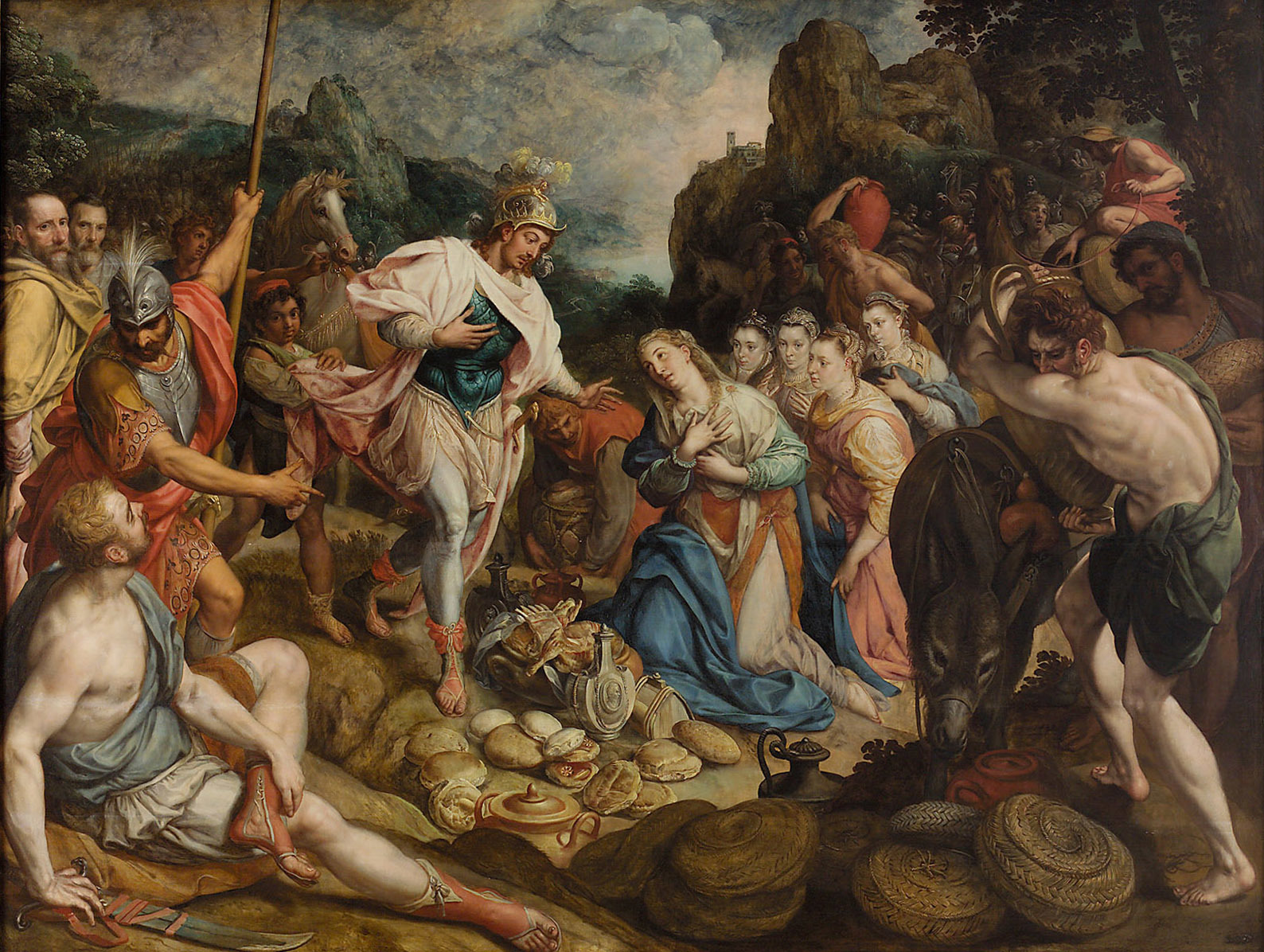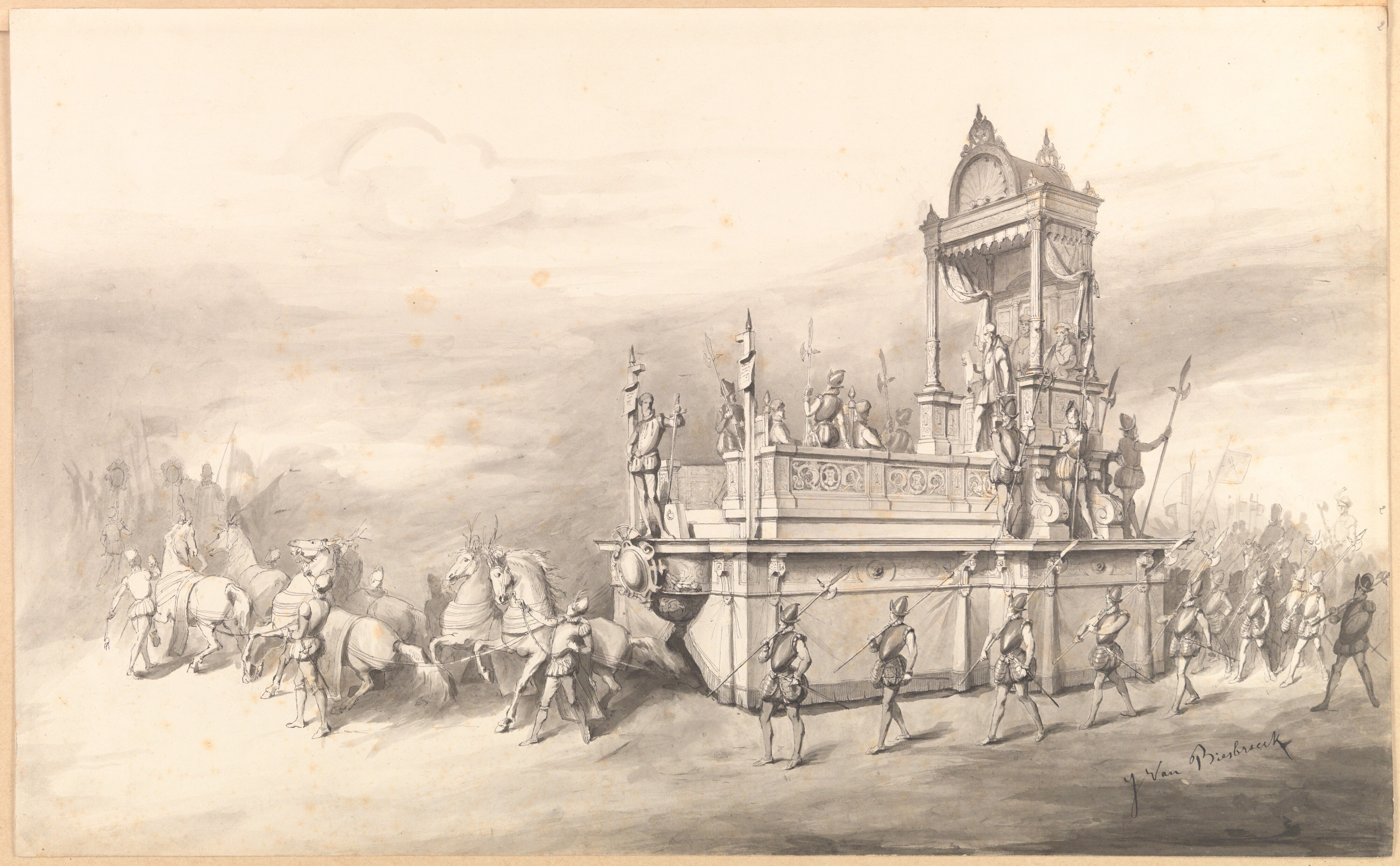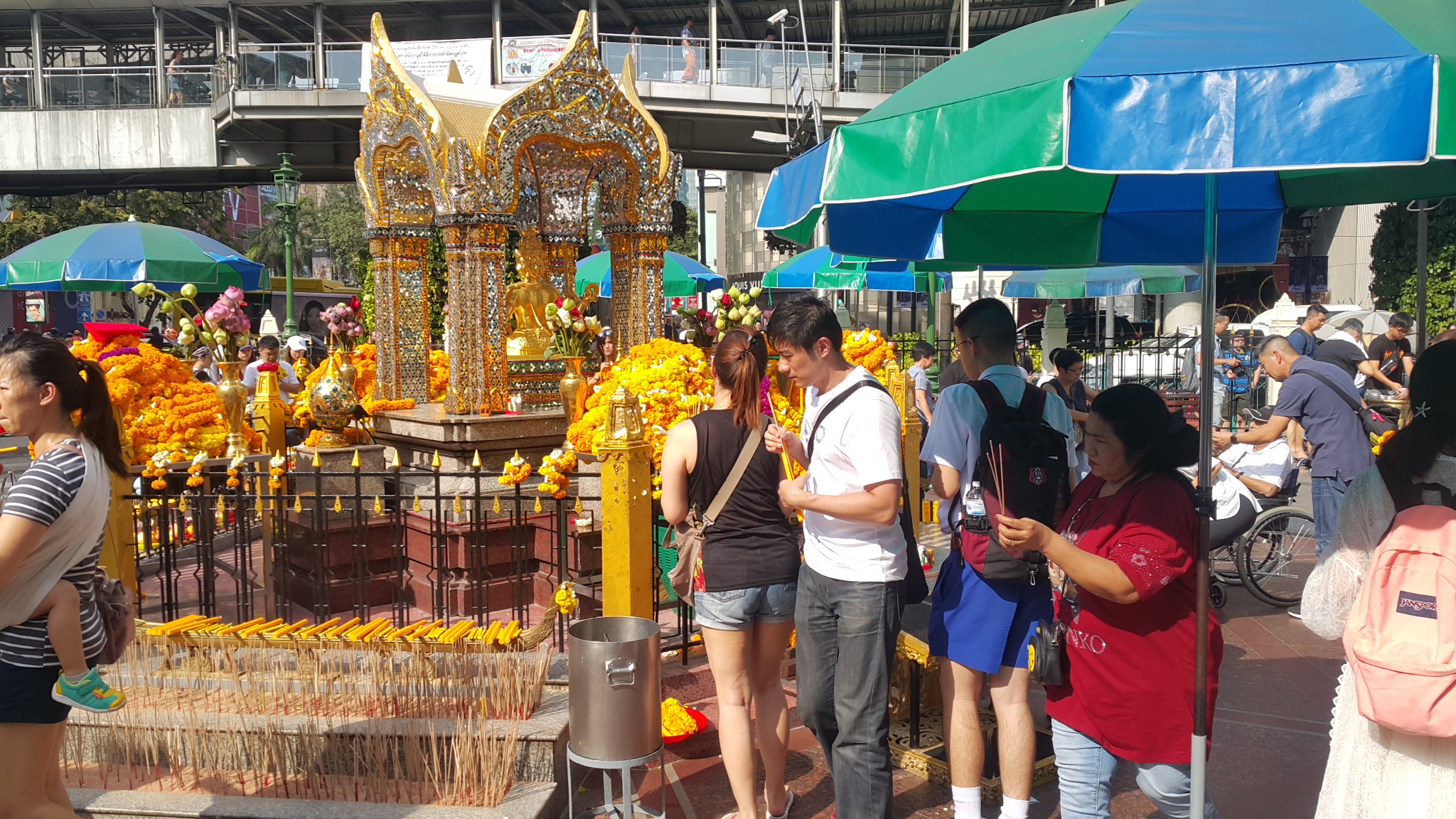|
Jan Van Hembyse
Jan van Hembyse or Hembyze (Ghent, 9 July 1513 – Ghent, 8 August 1584) was a Flemish politician and popular leader, with a demagogic tendency, who together with François van Ryhove brought about the Calvinist Republic of Ghent and for two periods (1577-1578 and 1583-1584) led that regime in the early stage of the Dutch Revolt and the Eighty Years' War as it unfolded in the County of Flanders. Personal life Jan was the son of Willem van Hembyse, a former schepen of Ghent, and Willemine Triest. He married Johanna van Waerhem on 23 April 1539.The marriage contract was signed on 22 February 1538, and Guillaume was born on 17 February 1539; Cf. Blommaert, pp. 54, 56 They had a son (Guillaume) and a daughter (Catherina). Career Hembyse followed his father in Ghent politics. He was also a minor noble and as such he joined the Compromise of Nobles that petitioned Margaret of Parma, the Regent of the Habsburg Netherlands, in 1566 for relief from the placards against heresy, issued by t ... [...More Info...] [...Related Items...] OR: [Wikipedia] [Google] [Baidu] |
Frans Pourbus The Elder
Frans Pourbus the ElderGaëlle Brackez, ''Frans Pourbus de oudere (1545-1581) Een blik op zijn leven en oeuvre volume i: tekst'', Masterproef voorgelegd aan de Faculteit Letteren en Wijsbegeerte, Vakgroep Kunst -, Muziek- en Theaterwetenschappen, voor het verkrijgen van de graad van Master, Universiteit Gent Academiejaar 2011 -2012 (Bruges, 1545 – Antwerp, 19 September 1581) was a Flemish Renaissance painter who is known primarily for his portraits and religious compositions, as well as a few genre scenes.Frans Pourbus the Elder, attributed to, ''Merry company'' at Lempertz He was the son of the prominent Bruges painter and |
Pacification Of Ghent
The Pacification of Ghent, signed on 8 November 1576, was an alliance between the provinces of the Habsburg Netherlands. The main objectives were to remove Habsburg Spain, Spanish mercenaries who had made themselves hated by all sides due to their plundering, and to promote a formal peace with the rebellious provinces of Holland and Zeeland. Background In 1566, the Habsburg Netherlands experienced considerable political upheaval and civil unrest, which culminated in the Beeldenstorm, iconoclastic fury of that year. Its ruler, Philip II of Spain, responded by appointing Fernando Álvarez de Toledo, 3rd Duke of Alba as List of governors of the Habsburg Netherlands, Governor-general, and in 1567 he arrived there to restore order, accompanied by an army of mercenaries. Philip soon replaced the most important advisors to former regent Margaret of Parma, either by summarily executing those such as the counts of Lamoral, Count of Egmont, Egmont and Philip de Montmorency, Count of Hoorn, ... [...More Info...] [...Related Items...] OR: [Wikipedia] [Google] [Baidu] |
Wallonia
Wallonia (; french: Wallonie ), or ; nl, Wallonië ; wa, Waloneye or officially the Walloon Region (french: link=no, Région wallonne),; nl, link=no, Waals gewest; wa, link=no, Redjon walone is one of the three regions of Belgium—along with Flanders and Brussels. Covering the southern portion of the country, Wallonia is primarily French-speaking. It accounts for 55% of Belgium's territory, but only a third of its population. The Walloon Region and the French Community of Belgium, which is the political entity responsible for matters related mainly to culture and education, are independent concepts, because the French Community of Belgium encompasses both Wallonia and the bilingual Brussels-Capital Region. There is a German-speaking minority in eastern Wallonia, resulting from the annexation of three cantons previously part of the German Empire at the conclusion of World War I. This community represents less than 1% of the Belgian population. It forms the German-speak ... [...More Info...] [...Related Items...] OR: [Wikipedia] [Google] [Baidu] |
Malcontents (Low Countries)
The Malcontents in the context of the Eighty Years' War or the Dutch Revolt were a faction of Catholic nobles in Hainaut and Artois who openly opposed William the Silent, also known as Wiiliam of Orange, the leader of the States General of the Netherlands in the Union of Brussels of the Habsburg Netherlands during the period after the adoption of the Pacification of Ghent. They formed the Union of Arras in January 1579 and negotiated a separate peace with the Spanish Crown, represented by the royal governor-general Alexander Farnese, Duke of Parma, in the form of the Treaty of Arras (1579), signed on 17 May 1579. History After the provinces of the Habsburg Netherlands in 1576 formed a united front against their overlord, Philip II of Spain, when they concluded the Pacification of Ghent and the Union of Brussels, they soon achieved most of their goals as Philip and his new governor-general Don Juan saw no other option than to accept those treaties and remove the mercenaries of the ... [...More Info...] [...Related Items...] OR: [Wikipedia] [Google] [Baidu] |
Sodomy
Sodomy () or buggery (British English) is generally anal or oral sex between people, or sexual activity between a person and a non-human animal ( bestiality), but it may also mean any non- procreative sexual activity. Originally, the term ''sodomy'', which is derived from the story of Sodom and Gomorrah in the Book of Genesis, was commonly restricted to anal sex. Sodomy laws in many countries criminalized the behavior. In the Western world, many of these laws have been overturned or are routinely not enforced. A person who practices sodomy is sometimes referred to as a sodomite. Terminology The term is derived from the Ecclesiastical Latin or "sin of Sodom", which in turn comes from the Ancient Greek word (Sódoma). Genesis (chapters 18–20) tells how God wished to destroy the "sinful" cities of Sodom and Gomorrah. Two angels are invited by Lot to take refuge with his family for the night. The men of Sodom surround Lot's house and demand that he bring the messengers o ... [...More Info...] [...Related Items...] OR: [Wikipedia] [Google] [Baidu] |
Iconoclastic Fury
''Beeldenstorm'' () in Dutch and ''Bildersturm'' in German (roughly translatable from both languages as 'attack on the images or statues') are terms used for outbreaks of destruction of religious images that occurred in Europe in the 16th century, known in English as the Great Iconoclasm or Iconoclastic Fury. During these spates of iconoclasm, Catholic art and many forms of church fittings and decoration were destroyed in unofficial or mob actions by Calvinist Protestant crowds as part of the Protestant Reformation. Most of the destruction was of art in churches and public places. The Dutch term usually specifically refers to the wave of disorderly attacks in the summer of 1566 that spread rapidly through the Low Countries from south to north. Similar outbreaks of iconoclasm took place in other parts of Europe, especially in Switzerland and the Holy Roman Empire in the period between 1522 and 1566, notably Zürich (in 1523), Copenhagen (1530), Münster (1534), Geneva (1535), ... [...More Info...] [...Related Items...] OR: [Wikipedia] [Google] [Baidu] |
Petrus Dathenus
Pieter Datheen, Latin Petrus Dathenus, English, Peter Datheen, (Cassel, Nord, c.1531 - Elbing, 17 March 1588) was a Dutch Calvinist theologian, the 16th century reformer of The Netherlands, who accomplished many things for the advancement the Reformed Church liturgy and ecclesiastical polity. First, he translated the Heidelberg Catechism into Dutch. Second, using the singing work of John Calvin, Theodore Beza, Peter Marot, and Louis Bourgeois, Datheen set the Psalms and psalter to verse and tune in Dutch (1566), though his settings were overshadowed by those of Philips of Marnix, Lord of Saint-Aldegonde, Philips Marnix van St Aldegonde. Third, he translated the famous "Form for the Administration of Holy Baptism" from Heidelberg Catechism, Heidelberg with its very orthodox emphasis on the Covenant of Grace containing two parts. Fourth, he translated the equally famous "Form for the Administration of the Lord's Supper," also from the Palatinate (region), Palatinate, still used by ... [...More Info...] [...Related Items...] OR: [Wikipedia] [Google] [Baidu] |
Roman Catholicism
The Catholic Church, also known as the Roman Catholic Church, is the List of Christian denominations by number of members, largest Christian church, with 1.3 billion baptized Catholics Catholic Church by country, worldwide . It is among the world's oldest and largest international institutions, and has played a prominent role in the history and development of Western civilization.Gerald O'Collins, O'Collins, p. v (preface). The church consists of 24 Catholic particular churches and liturgical rites#Churches, ''sui iuris'' churches, including the Latin Church and 23 Eastern Catholic Churches, which comprise almost 3,500 dioceses and Eparchy, eparchies located List of Catholic dioceses (structured view), around the world. The pope, who is the bishop of Rome, is the Papal supremacy, chief pastor of the church. The bishopric of Rome, known as the Holy See, is the central governing authority of the church. The administrative body of the Holy See, the Roman Curia, has its pr ... [...More Info...] [...Related Items...] OR: [Wikipedia] [Google] [Baidu] |
Freedom Of Religion
Freedom of religion or religious liberty is a principle that supports the freedom of an individual or community, in public or private, to manifest religion or belief in teaching, practice, worship, and observance. It also includes the freedom to change one's religion or beliefs, "the right not to profess any religion or belief", or "not to practise a religion". Freedom of religion is considered by many people and most nations to be a fundamental rights, fundamental human right. In a country with a state religion, freedom of religion is generally considered to mean that the government permits religious practices of other sects besides the state religion, and does not religious persecution, persecute believers in other faiths (or those who have no faith). Freedom of belief is different. It allows the right to believe what a person, group, or religion wishes, but it does not necessarily allow the right to practice the religion or belief openly and outwardly in a public manner, a ... [...More Info...] [...Related Items...] OR: [Wikipedia] [Google] [Baidu] |
Coup D'état
A coup d'état (; French for 'stroke of state'), also known as a coup or overthrow, is a seizure and removal of a government and its powers. Typically, it is an illegal seizure of power by a political faction, politician, cult, rebel group, military, or a dictator. Many scholars consider a coup successful when the usurpers seize and hold power for at least seven days. Etymology The term comes from French ''coup d'État'', literally meaning a 'stroke of state' or 'blow of state'. In French, the word ''État'' () is capitalized when it denotes a sovereign political entity. Although the concept of a coup d'état has featured in politics since antiquity, the phrase is of relatively recent coinage.Julius Caesar's civil war, 5 January 49 BC. It did not appear within an English text before the 19th century except when used in the translation of a French source, there being no simple phrase in English to convey the contextualized idea of a 'knockout blow to the existing administratio ... [...More Info...] [...Related Items...] OR: [Wikipedia] [Google] [Baidu] |
Philippe III De Croÿ
Philippe de Croÿ, 3rd Duke of Aarschot, 4th Prince of Chimay, Count of Porcean (Valenciennes, 10 July 1526Venice, 11 December 1595), was Stadtholder of Flanders, and inherited the estates of the ancient and wealthy family of Croÿ. Becoming a soldier, he was made a Knight of the Order of the Golden Fleece by Philip II, king of Spain, and was afterwards employed in diplomatic work. Life He was the second son of Philippe II de Croÿ (1496–1549) and Anna de Croÿ (1501–1539). After the death of his elder brother Charles II de Croÿ in 1551, he became 3rd Duke of Aarschot, 4th Prince of Chimay and 4th Count of Beaumont. He took part in the troubles in the Netherlands, and in 1563 refused to join William the Silent and others in their efforts to remove Cardinal Granvelle from his post. This attitude, together with Aarschot's devotion to the Roman Catholic Church, which he expressed by showing his delight at the Massacre of St. Bartholomew, led Philip of Spain to regard him with ... [...More Info...] [...Related Items...] OR: [Wikipedia] [Google] [Baidu] |
John Of Austria
John of Austria ( es, Juan, link=no, german: Johann; 24 February 1547 – 1 October 1578) was the natural son born to Holy Roman Emperor Charles V late in life when he was a widower. Charles V met his son only once, recognizing him in a secret codicil to his will. John became a military leader in the service of his half-brother, King Philip II of Spain, Charles V's legitimate heir, and is best known for his role as the admiral of the Holy Alliance fleet at the Battle of Lepanto. Life Early years Born in the Free imperial city of Regensburg, Upper Palatinate, John of Austria was the product of a brief liaison between Charles V, Holy Roman Emperor (a widower since 1539) and Barbara Blomberg, a burgher's daughter and singer. In the summer of 1554, the boy was taken to the castle of Luis de Quijada in Villagarcía de Campos, Valladolid. Magdalena de Ulloa, the wife of Luis de Quijada, took charge of his education, assisted by the Latin teacher Guillén Prieto, the chaplain Garcí ... [...More Info...] [...Related Items...] OR: [Wikipedia] [Google] [Baidu] |




.jpg)


